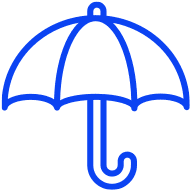3 Documentation Practices to Protect Professionals Against Liability Claims
In the world of professional services, protecting oneself against liability claims is paramount. This article delves into essential documentation practices that can safeguard professionals from potential legal challenges. Drawing on insights from industry experts, it explores key strategies including comprehensive contract drafting, thorough decision-making documentation, and the importance of written follow-ups.
- Draft Comprehensive Contracts for Strong Defense
- Document Decision-Making Process and Alternatives Considered
- Follow Up with Written Summaries
Draft Comprehensive Contracts for Strong Defense
In my experience, the best way to protect against liability isn't just documenting client interactions after the fact—it's contracting with intention at the start. Too often, professionals rely on boilerplate forms or documents filled with "scary" legal jargon that looks tough but won't hold up if tested.
At Waldrop & Colvin, we emphasize drafting contracts that anticipate the good, the bad, and the ugly. That means building agreements that clearly define expectations, outline remedies if things go sideways, and allocate risks fairly. When disputes arise, the strength of your contract often determines whether you're defending from a position of confidence—or scrambling to fill gaps.
Beyond contracts, I recommend professionals keep contemporaneous records of major client communications: confirm key conversations in follow-up emails, document approvals and changes in writing, and store everything in a consistent, organized system. What has proven most valuable is a simple practice: when in doubt, put it in writing. A clear paper trail shows you acted transparently and in good faith, which is invaluable in resolving disputes or defending claims.
The short answer: invest upfront in enforceable agreements that anticipate the full lifecycle of the relationship, and reinforce those with consistent, written documentation. That combination is the strongest shield against liability.

Document Decision-Making Process and Alternatives Considered
The most valuable documentation practice isn't just recording what you did, but clearly recording why you did it. Your notes must defend your professional judgment, not just list your actions.
In any potential liability claim, the opposing counsel will question your decision-making process. Your documentation is your primary evidence to demonstrate that your judgment was sound, thoughtful, and met the standard of care, even if the outcome was not perfect.
The single most effective technique I use and teach in my practice is documenting "Alternatives Considered." For every significant decision—be it a treatment plan or a safety assessment—I write down what other reasonable options I considered and the specific rationale for rejecting them.
For instance, if I determine a patient with suicidal thoughts does not require hospitalization, my note will explicitly state that I considered that option but deemed it unnecessary due to specific protective factors I observed, like strong family support and a willingness to create a safety plan. This note proves I didn't ignore the risk; I actively assessed it and made a reasoned, defensible clinical choice.

Follow Up with Written Summaries
Professionals should document every client interaction with diligence, keeping detailed records of all communications, decisions, and advice given. Key steps include maintaining dated meeting notes, saving email or text correspondence, and sending written summaries of important discussions for the client to acknowledge. In my experience, the most valuable practice is to follow up each substantive conversation with a confirmation email or letter that captures what was agreed or advised. This creates a timestamped record that can serve as critical evidence if a liability claim arises, often preventing the dreaded "he said, she said" scenario by clearly establishing each party's understanding. By consistently documenting interactions and obtaining written consent for any major changes or decisions, professionals in Romania (as elsewhere) can show they acted transparently and in good faith, thereby significantly strengthening their defense against potential liability claims.
Narcis BOGOIU, Managing Partner at BMA Legal - Bogoiu Matei & Associates, a Romanian law firm recognized for its expertise in technology, regulatory, and commercial law.


